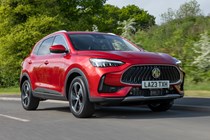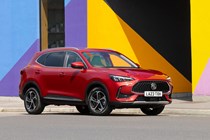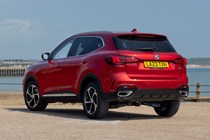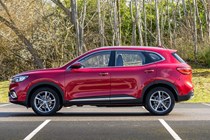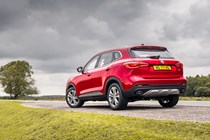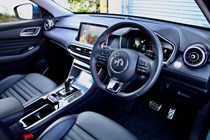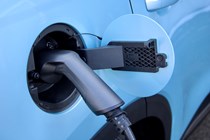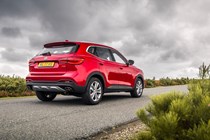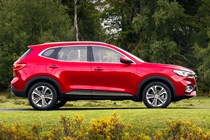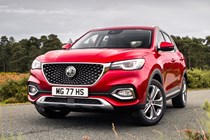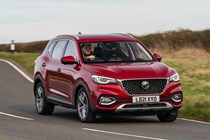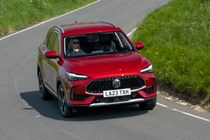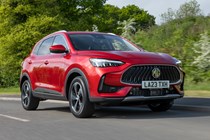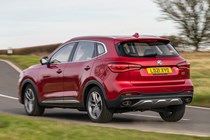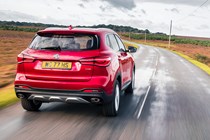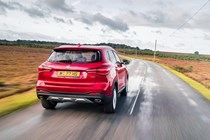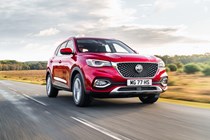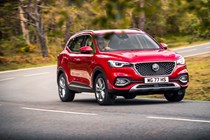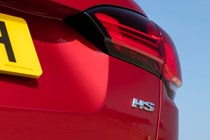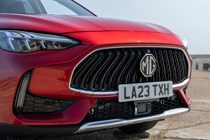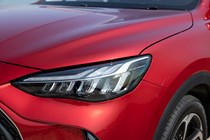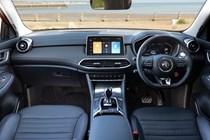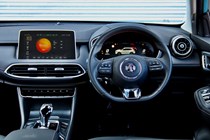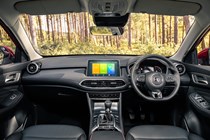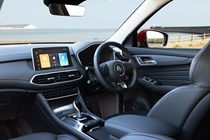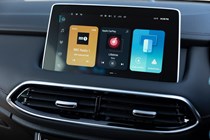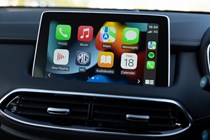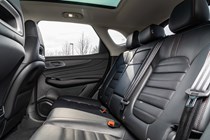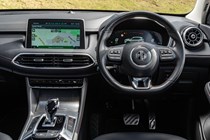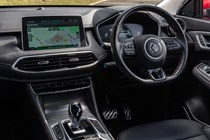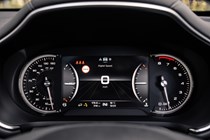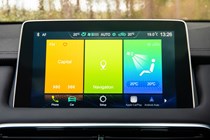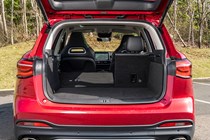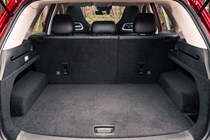
MG HS SUV (2019-2024) engines, drive and performance
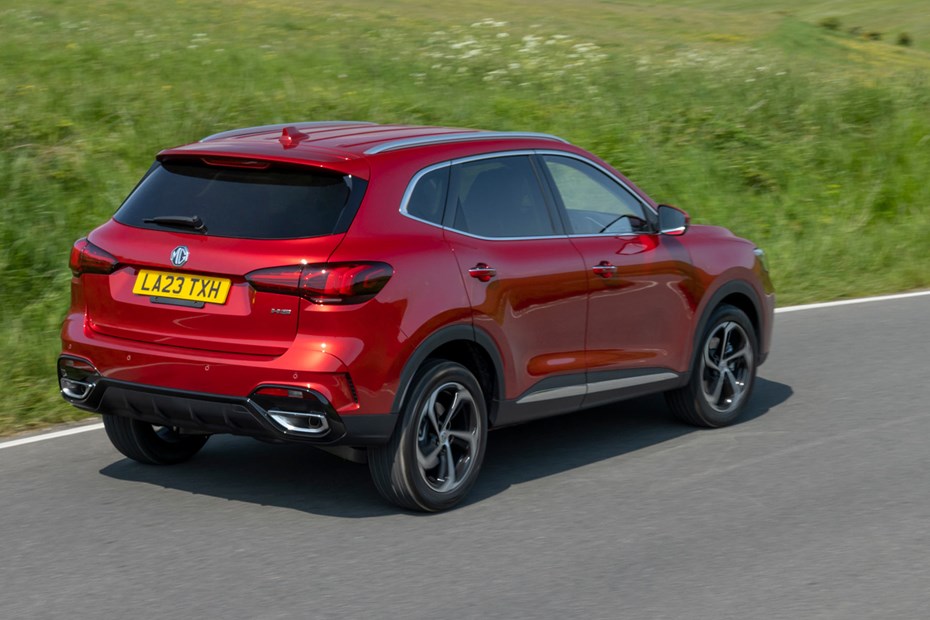
- Petrol and plug-in hybrid engines noisy
- Choice of manual or automatic gearbox
- Handling isn’t as good as rivals
Petrol engines
On paper, the HS’s turbocharged 1.5-litre petrol engine’s 162hp output seems pretty good, and acceleration is relatively brisk. But push the pedal aggressively in the hope of a rapid getaway, and the engine is jerky and unwilling. If you keep pushing, this unwillingness evolves into downright objection as vibrations and a coarse engine note make their way into the cabin. The best tactic is to change gears earlier and drive in a more relaxed manner, in which instance the engine works perfectly fine.
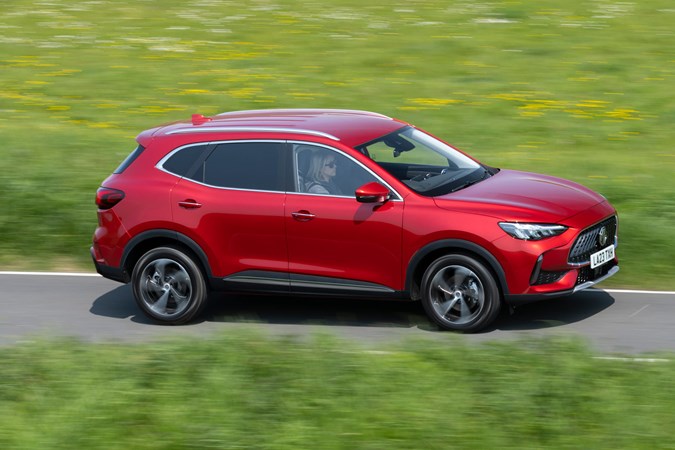
The seven-speed dual-clutch automatic transmission (DCT) option underlines this general lack of enthusiasm with its own slow reactions to the driver’s inputs. Despite this, the auto is still preferable to the manual, which has a sloppy and unrewarding change quality.
Hybrid engines
You get similarly noisy results with the plug-in hybrid electric vehicle (PHEV) model. This uses the same 1.5-litre engine as its starting point, although the electrical boost does at least make the HS feel a little more sprightly. Power climbs to a chunky 258bhp and 370Nm of torque, which MG says is enough for a 0–60mph time of 6.9 seconds. It never feels anywhere near as quick as this, however.
The unit is only available with MG’s aforementioned dual-clutch automatic gearbox, which we’ve already established isn’t the best in the business. Even with the electric motor to assist it’s jerky when setting off and changes with a clunk if you’re not exceptionally smooth with the accelerator pedal.
As a consequence it can lunge, leaving your passengers wondering at your driving technique. There are noticeable gaps in the rev range as the car fumbles for the right gear, which is quite unsettling when it happens as you need acceleration the most – overtaking, for example. But again, you can get around this by learning to drive with a lighter right foot.
Though it won’t concern some, minimal drive modes are available with the HS – not even a Sport mode for quicker response. We also found the car defaulting to use the petrol engine more than the electric motor in ‘hybrid’ mode, when it’s usually the other way around.
What’s it like to drive?
- Light but precise steering
- Handling is biased towards ride quality
- Brakes are powerful
Not bad. But not great. Even though the PHEV model claims impressive performance figures, you’d never want to come close to them, as we found further evidence of MG’s cost-cutting strategy in the HS’s chassis. Simply put, its suspension just isn’t as sorted as any of its European rivals – especially if you’re asking for any sort of speed.
The HS doesn’t have anywhere near the same level of body control as its rivals. You can catch it off-guard when corning, too – even at low speeds. We hit a bump driving around town, and the shock was enough to lift the front end off the tarmac and plough the car forward for a few feet before the chassis settled down again.
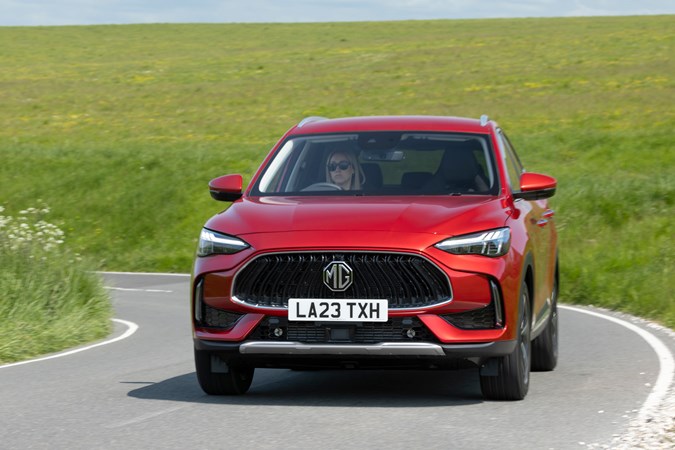
As such, while it can just about manage the power offered by the cheaper conventional 1.5-litre petrol engine, it struggles to cope with the more potent PHEV model. Even light throttle inputs at low speeds are enough to make the front wheels break loose when it’s wet, or when you’re driving on the smooth concrete in multi-storey car parks.
Happily, the brakes are powerful, though, and MG’s decision to opt for a softer suspension setup means ride quality is reasonable – especially on the motorway. However, the dampers aren’t quite sophisticated enough to smooth out potholes. Strike some badly broken tarmac, and you’ll get a sharp judder through the cabin.


